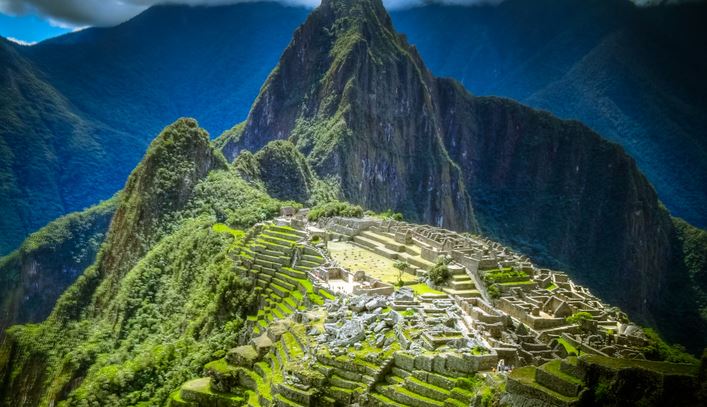Facts About the Inca Civilization: An Empire in the Andes |

|
|
Photo by: Babak Fakhamzadeh |
|
More Ancient Facts: The Inca civilization, which flourished in the Andes Mountains of South America from the 15th to 16th centuries, built a vast and impressive empire. Known for their remarkable engineering, intricate social organization, and rich cultural traditions, the Inca left an enduring legacy. Here are 12 fascinating facts that offer a glimpse into their world, followed by some frequently asked questions. They Built an Extensive Road SystemThe Inca constructed an incredibly sophisticated network of roads, often called the Inca Road system, spanning thousands of kilometers across the rugged Andes. These roads facilitated communication, trade, and the movement of armies throughout their empire. Machu Picchu Is a Marvel of EngineeringMachu Picchu, a stunning citadel high in the Andes, is a testament to Inca architectural and engineering skill. Its precise stonework and integration with the natural landscape continue to amaze visitors and researchers. They Used a Unique Record-Keeping SystemLacking a written language in the European sense, the Inca used a complex system of knotted strings called quipu to record numerical information, historical events, and possibly even literature. The precise meaning of many quipus remains a mystery. Cuzco Was Their Imperial CapitalCuzco, located in modern-day Peru, was the heart and capital of the Inca Empire. It was considered a sacred city and the center of their political and religious power. Terracing Transformed AgricultureTo cultivate land in the steep Andean terrain, the Inca developed sophisticated agricultural terracing techniques. These terraces maximized arable land, prevented soil erosion, and allowed for efficient irrigation, as discussed in studies of Inca agriculture. They Worshipped the Sun God IntiThe Sun god Inti was the most important deity in the Inca pantheon. The emperor, or Sapa Inca, was believed to be a descendant of Inti, reinforcing his divine authority. Social Organization Was Highly StructuredInca society was rigidly organized into a hierarchical system. At the top was the Sapa Inca, followed by nobles, priests, and then the majority of the population, who were organized into communal work units called *ayllus*. They Were Skilled MetalworkersThe Inca were accomplished metalworkers, skilled in crafting objects from gold, silver, and copper. These metals were used for decorative purposes, tools, and religious artifacts. They Had No Wheeled VehiclesDespite their advanced engineering skills, the Inca did not develop or widely use wheeled vehicles. Their transportation relied on llamas and human runners along their extensive road system. Textiles Were Highly ValuedTextiles held great cultural and economic significance in the Inca Empire. They were used as a form of tribute, currency, and to denote social status, with intricate designs and fine weaving indicating higher rank. They Performed Successful Brain SurgeryArchaeological evidence suggests that the Inca performed surprisingly successful cranial surgeries, known as trepanation. Skulls have been found with healed openings, indicating that some patients survived these procedures, as documented in anthropological studies. Their Empire Was Relatively Short-LivedThe Inca Empire expanded rapidly in the century before the arrival of the Spanish conquistadors in the early 16th century. The Spanish conquest, led by Francisco Pizarro, brought an end to the Inca Empire relatively quickly. Incan Empire FAQsCheck out a few more questions and answers about the Incan empire. Where was the Inca civilization located?The Inca civilization was located in the Andes Mountains of South America, primarily in modern-day Peru, but also extending into parts of Ecuador, Bolivia, Chile, and Argentina. What was the capital city of the Inca Empire?The capital city of the Inca Empire was Cuzco, located in the highlands of Peru. It was the political, religious, and administrative center of their vast realm. How did the Inca communicate and transport goods across their empire?The Inca relied on their extensive road system and a network of chasquis (runners) to relay messages and transport lightweight goods. Llamas were also used for carrying heavier loads. What was the purpose of Machu Picchu?The exact purpose of Machu Picchu is still debated, but it is believed to have been a royal estate, a religious sanctuary, or a combination of both. Its strategic location and intricate construction suggest it held significant importance. What ultimately led to the downfall of the Inca Empire?The downfall of the Inca Empire was primarily due to the arrival of the Spanish conquistadors in 1532. Internal conflict within the empire, coupled with the superior weaponry and diseases brought by the Spanish, led to their swift defeat. |